Ultimate Guide To Growing And Caring For Cucamelon Plants
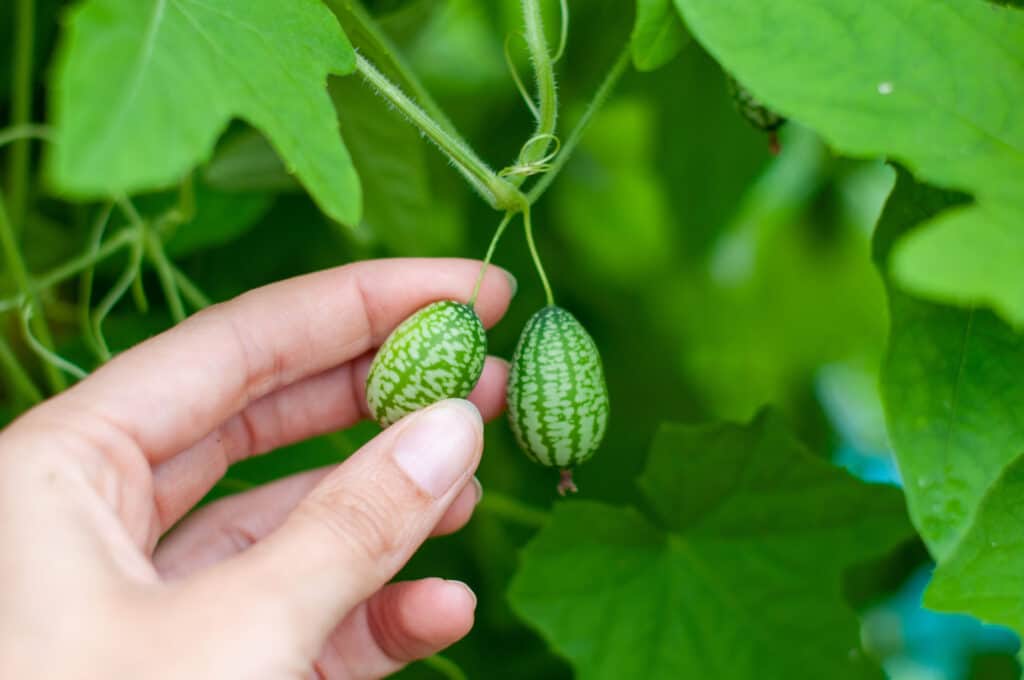
Table of Contents
Growing Cucamelons, sometimes called Mexican sour gherkins or Mouse Melons, in your yard or patio is fun. About the size of a grape or cherry tomato, these little fruits have a complex flavour that combines sweetness and tartness. They are originally from Mexico and Central America but have recently become increasingly popular among American gardeners and cooks.
Plants of the Cucamelon species are ideal for first-time gardeners due to their low maintenance requirements. They can withstand dry conditions, resist pests, and bear fruit for a long time. Mouse melons can be utilised in many ways in the kitchen, from salads to pickles.
This comprehensive guide will teach you how to nurture your Mouse Melon plants to full maturity. We’ll lay out everything you need to know to successfully plant, water, fertilise, prune, and harvest. We’ll also discuss the resources your Cucamelon plants will require to grow strong and fruitful. This book contains everything a gardener, novice or otherwise, needs to know to cultivate and harvest these tasty treats successfully.
Where Are the Cucamelon Plants’ Natural Habitats?
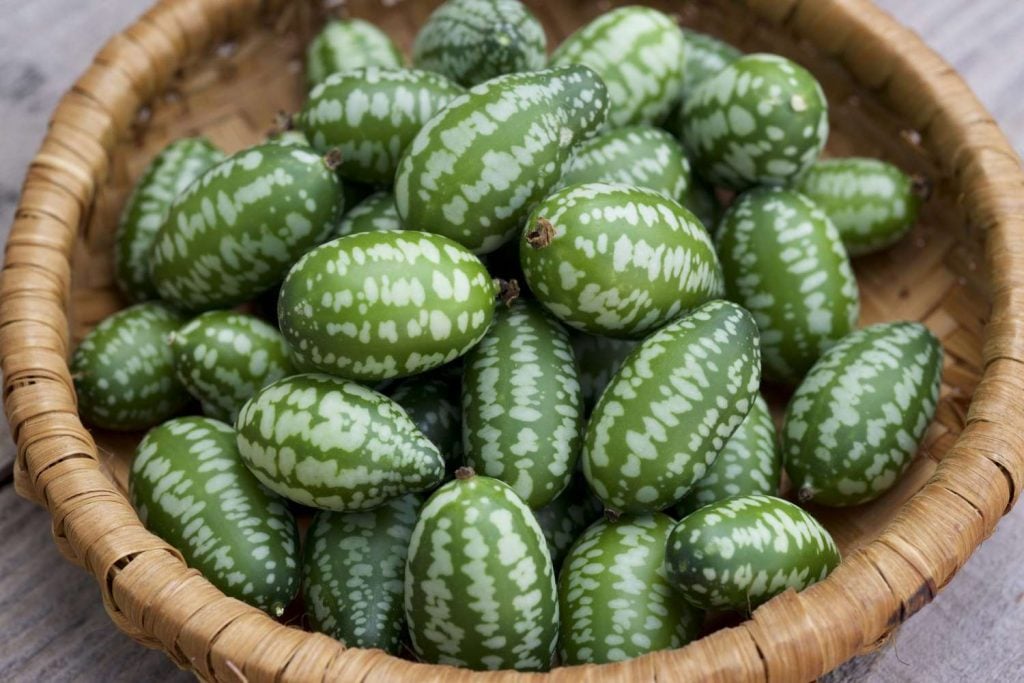
Plants that produce Mouse Melons are indigenous to both Central and South America, and you may find them growing wild in Mexico, Guatemala, and Costa Rica. They thrive in regions that receive a lot of sunlight and are most comfortable in warm and humid situations. Because they can thrive in either the ground or in containers. Mouse Melons are an excellent choice for locations such as patios and balconies that are limited in size. They require soil that drains appropriately and thrives best in an environment with a pH range of 6.0 to 6.8. Cultivating Mouse Melons inside or in a glasshouse in regions with cooler conditions is possible. Mouse Melons, in general, are versatile plants that can be cultivated in various environments as long as they are given the appropriate amount of care and attention.
How to Grow Cucamelon Plants
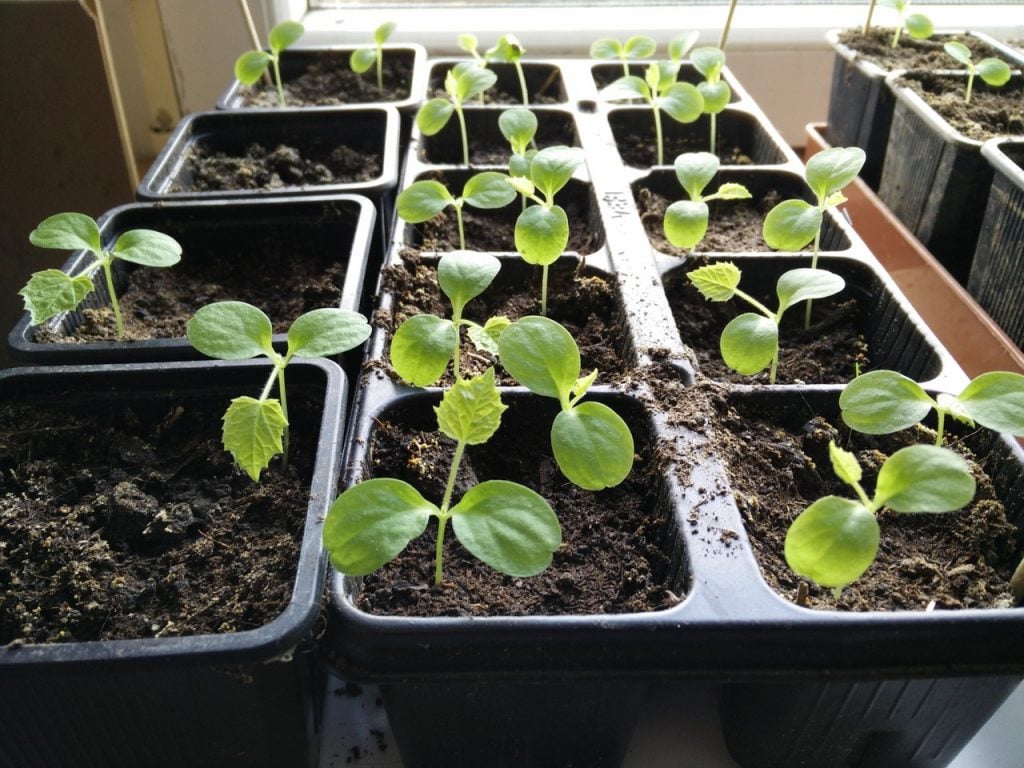
Mouse Melons are a rare and tasty fruit that requires little maintenance. They originated in Mexico and Central America and are related to cucumbers. They’re growing in popularity among home growers thanks to their compact stature, distinct flavour, and adaptability in cooking. Instructions for cultivating Cucamelon plants are as follows:
1. Get Good Seeds to Start
Starting with high-quality seeds is the first step in cultivating Cucamelon plants. You can get seeds at your local garden centre or online. Try to find new seeds with a reasonable germination rate. To further guarantee the growth of healthy, long-lasting plants, select organic, non-GMO seeds.
2. Pick an Appropriate Region
Plants of the Mouse Melon kind do best in full sun or light shade. Find an area in your yard or patio where you can bask in the sun for at least six hours daily. Do your best to improve the soil’s drainage and fertility by adding compost or other organic material.
3. Indoors or Outdoors
You can either sow Cucamelon seeds outdoors or start them in a glasshouse. Seeds should be started indoors six to eight weeks before the average last frost date. Put the seeds in high-quality potting mix in tiny pots or seed trays. Maintain a consistent watering schedule to prevent the soil from drying out completely. The seedlings are ready to be moved outdoors at around three inches in height.
4. Soil Profile
Wait until the soil is at least 60 degrees Fahrenheit warmer than when you plan to plant your Cucamelon seeds. Plant the seeds an inch deep and space them out by six inches. Plant them in the ground and give them lots of water. If you don’t have enough room for a garden, you can still grow the plant by planting seeds in raised beds or containers.
5. Support Requirements
Cucamelon plants are climbers, so give them something to grab onto as they get taller. A trellis, bamboo poles, or wire can support the vines. It can be challenging to add support once the plants have begun to climb. Therefore, it is essential to put the support before the plants begin to climb. As the plants develop, carefully guide the vines up the support.
6. Consistent Fertilisation
These plants respond well to consistent feedings of a balanced fertiliser. Ensure your plants get the nutrients they need using a slow-release or liquid fertiliser every two weeks. If you fertilise too much, the plant will put its energy into producing leaves rather than fruit.
7. Spread the Plants Widely
When the Cucamelon plants reach a height of about four inches, you should thin them down so that only the healthiest plants remain. Because of this, more oxygen and light can reach the plant, both crucial to its growth.
How to Care for Cucamelon Plants
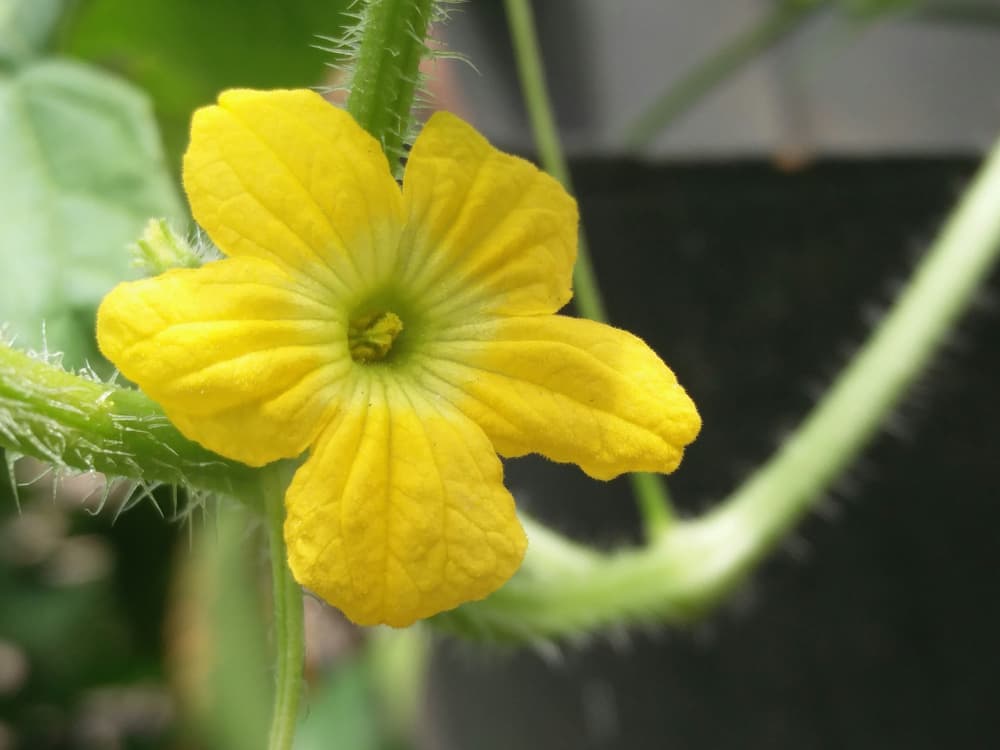
The plants that produce Mouse Melons are simple to cultivate and care for. They can yield a bountiful harvest of these exciting and delectable fruits with the proper attention. The following are some pointers on adequately caring for Cucamelon plants to promote their robust growth and abundant fruit output.
1. Feeding Some Water
Cucamelon plants must have consistent water access to achieve optimal growth. They thrive best in consistently moist soil, so thoroughly soak once a week or more frequently if the soil is dry. It is important not to overwater your plants because doing so can cause root rot. It is ideal to water your plants in the morning so they have time to dry out before nightfall, which will help prevent the formation of fungi.
2. Fertilising
It is crucial to fertilise Cucamelon plants to guarantee they will acquire the nutrients necessary for good growth and fruit production. Use a slow-release granular or liquid fertiliser with a balanced nutrient profile every two weeks. Compost and manure are two examples of organic fertilisers that you can use. Fertiliser that is applied too late in the growing season might reduce the amount of fruit produced; thus, it is essential to fertilise consistently.
3. Pruning
It is necessary to prune Cucamelon plants to maintain their neat appearance and to stimulate increased fruit production. Take off any leaves that are wilted or broken, then prune the vines so there isn’t too much competition for space. It will allow increased air circulation and exposure to sunshine, all of which are necessary for healthy growth. In addition, pruning helps prevent the transmission of diseases and pests among plants.
4. Support
The Cucamelon plant is a climber that requires staking or other support. They can scale vertical structures like trellises, poles, and wires. Ensure the vines have something to climb on to keep them off the ground and away from pests and diseases. Tightly connect the vines to the support as they grow.
5. Insects And Germs
Although Cucamelon plants resist many pests, spider mites, aphids, and whiteflies may attack them. Keep a close eye on your plants and take corrective measures if you see any evidence of pest activity. Neem oil and insecticidal soap are two examples of organic pest management options. Remove diseased plants from the garden immediately to stop the spread of the infection to healthy plants.
6. Harvesting
Pick the fruits of the Cucamelon when they reach the size of a grape or cherry tomato. It’s ideal for them to be crisp and firm to the bite. Regular fruit picking will ensure a continuous supply of fruit. The plants will produce more fruit if you harvest them frequently. Fruits lose texture and flavour if left on the vine for too long.
Cucamelon plants are annuals; thus, they die in the event of a frost or freeze. They need a sunny indoor space to survive the winter, though. Dig up the plant and prune the roots to fit in a pot before the first frost. Plant in a sunny spot, and give it plenty of water and fertiliser. When spring comes around, you can put the plant outside again.
Equipment Necessary for Cultivating Cucamelons
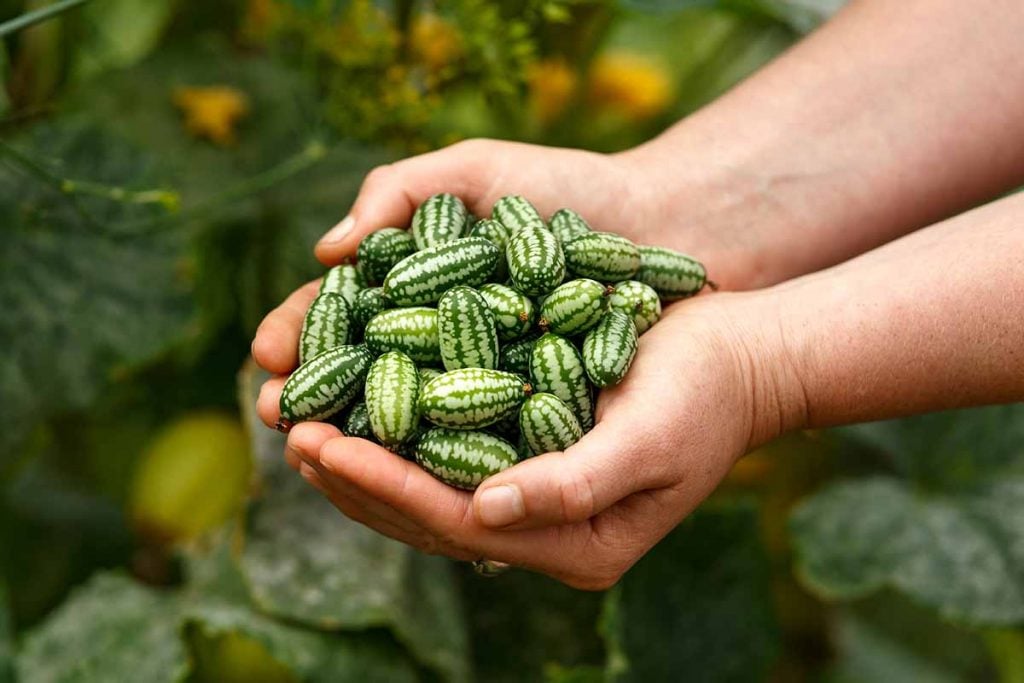
Growing Cucamelon plants may be fun and very rewarding, but you’ll need a few necessities to ensure they grow. It doesn’t matter if you’re a seasoned gardener or just starting out; having the proper equipment is crucial to the healthy development of your Mouse Melon plants. The following is a list of the essential items for cultivating Mouse Melon plants:
- Seed Starting Kit: Growing Cucamelon plants from seed require a seed starting kit. This set includes a grow lamp, humidity dome, peat pots or seedling cells, and seed trays. With the help of a seed starting kit, you can create the ideal conditions for seed germination by regulating temperature and humidity.
- Garden Soil: The soil in which Cucamelon plants are grown must be rich in organic matter and have good drainage. It is necessary to work with high-quality garden soil full of nutrients with a pH level between 6.0 to 6.5. In addition, you can enhance the soil’s quality and drainage by adding compost or other organic materials.
- Fertiliser: Cucamelon plants must receive fertiliser to flourish and produce an abundant crop. You can use organic fertiliser or synthetic fertiliser to supply your plants with the required nutrients. Utilising a fertiliser that has nitrogen, phosphorus, and potassium in proportions that are all identical to one another is highly advised.
- Support Or A Trellis: Climbing vines like Mouse Melons need to be supported so that they can develop in a vertical direction. The essential support for the vines can be provided by a trellis constructed out of bamboo poles or wire. You might use a tomato cage or a stake as an additional support method.
- Sprayer Or Stream Of Water: To produce fruit, Cucamelon plants need a steady supply of water. You can provide uniform and thorough watering using a watering can or a hose fitted with a spray nozzle. Once a week, or more often if the soil is dry, water the plants thoroughly.
- Pruning Shears: You’ll need pruning shears to keep your Cucamelon plants in good condition and form. Remove any damaged or diseased foliage and keep the vines from encroaching on each other by using the shears. Pruning increases fruit yields by maximising the plant’s exposure to light and air.
- Organic Pest Control: Although Cucamelon plants resist many common diseases, they may be attacked by spider mites, aphids, and whiteflies. To avoid pest infestations, use natural pest control products like neem oil or insecticidal soap.
- Garden Gloves: Protecting your hands from thorns, insects, and other potential hazards with a good pair of gardening gloves is necessary when working in the garden. Choose gloves that offer sufficient protection without impeding your range of motion and have a good fit overall.
- Garden Trowel: A gardening trowel is indispensable for various gardening activities, such as transferring young plants, ventilating the earth, and excavating shallow pits. Go for a spade with a comfortable grip and a robust, long-lasting cutting edge to endure repeated utilisation.
- Mulch: Utilising mulch is a potent approach to impede soil erosion, manage the proliferation of weeds, and sustain a uniform temperature in the soil. As a mulch encircling the Cucamelon vegetation, you may employ natural substances such as hay, foliage, or lawn trimmings.
- pH Metre: The pH level of soil can be measured using a pH meter instrument. Soil pH between 6.0 and 6.5 is ideal for these plants. With the help of a pH metre, you may establish ideal growing conditions for your plants by adjusting the soil’s pH levels with lime or sulphur.
Now that you have the necessary equipment, let’s talk about how to cultivate and take care of Cucamelon plants.
Final Thoughts
Cucamelon plant growth and maintenance is a pleasurable and rewarding hobby for gardeners of all skill levels. Unique and tasty, these fruits are also low-maintenance and simple to cultivate, making them ideal for novice gardeners. You must regularly cut the plants, gather the fruits, water and fertilise them, and remember to start the seeds indoors.
With just a few inexpensive supplies and basic gardening know-how, you can cultivate delicious, nutrient-rich Cucamelon plants in your kitchen. You should try growing these little fruits this year in your garden or patio. Growing and picking your own Mouse Melons could be a pleasant experience you didn’t expect. Following these guidelines will ensure your Mouse melon plants thrive in your backyard or patio garden.
We hope this article helped you gain confidence and packed you with all the information you need to start growing your own Cucamelon plants. Stop waiting and start planting them today!

![When and How to Grow Broad Beans [UK]](https://staging.thearches.co.uk/wp-content/uploads/How-To-Grow-Broad-Beans-scaled.jpg)
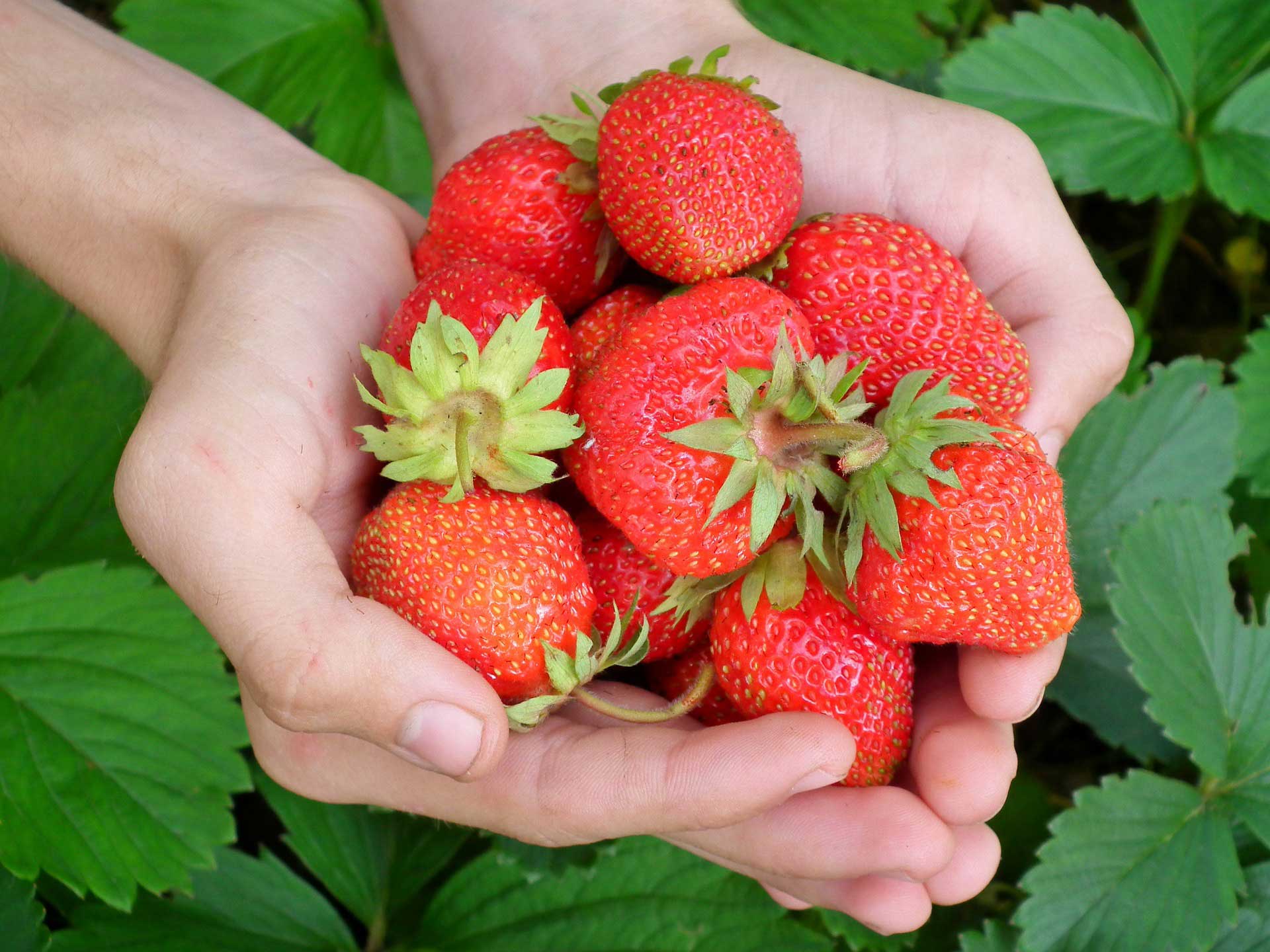
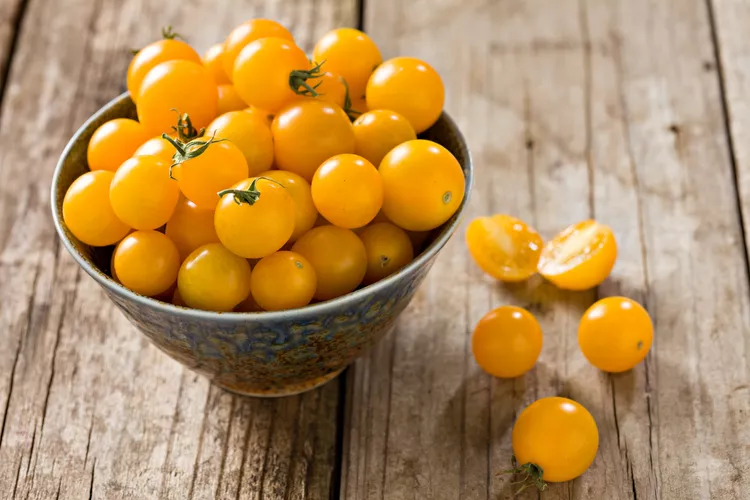

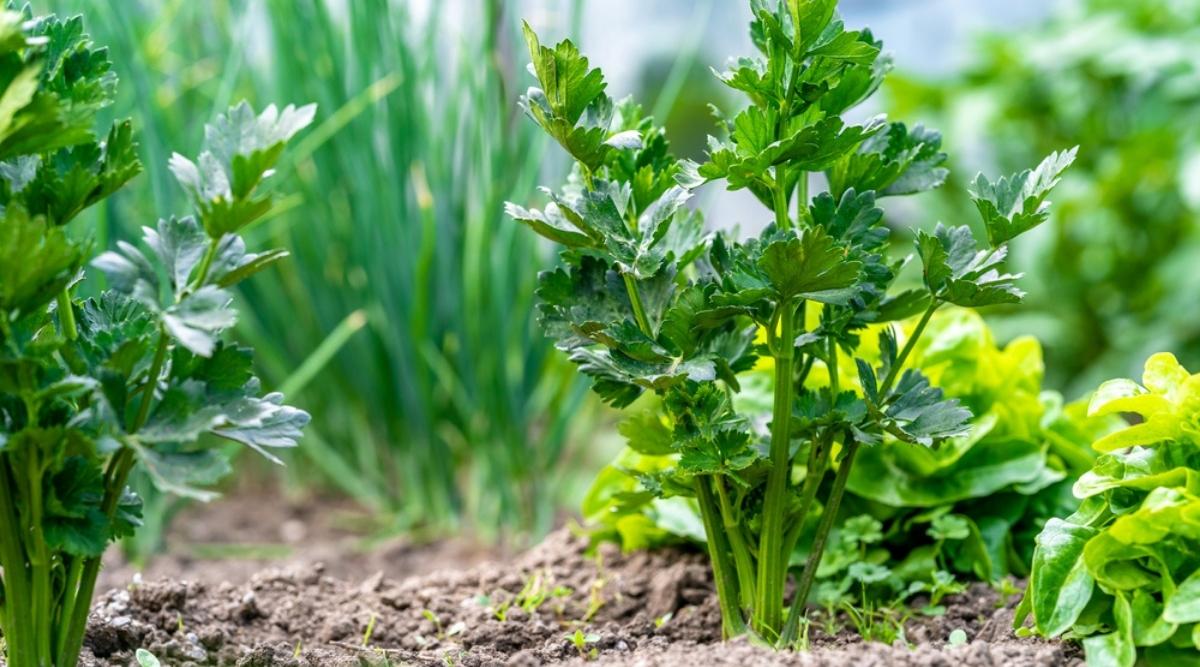
![How to Grow and Care for Black Mulberry Plants [UK]](https://staging.thearches.co.uk/wp-content/uploads/Black-Mulberry-Plants-.jpg)